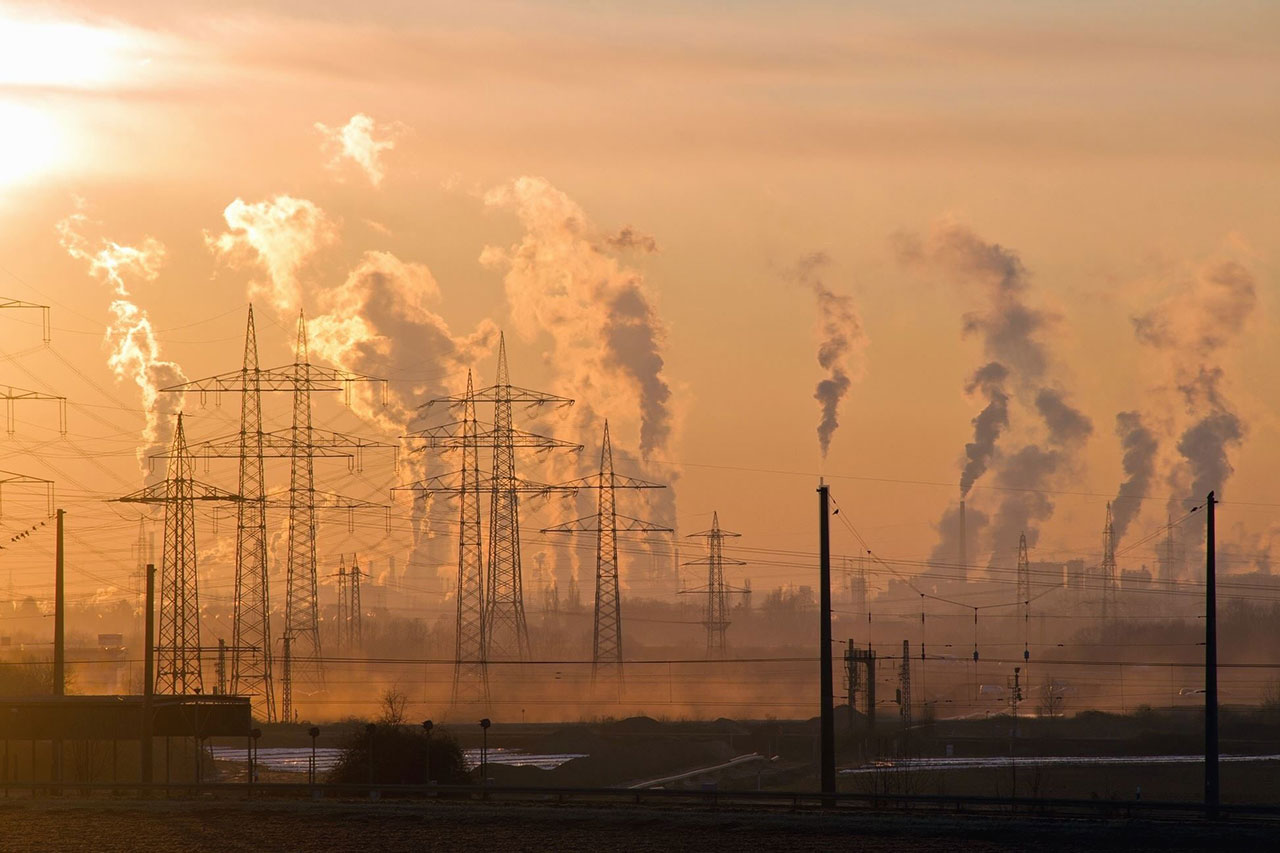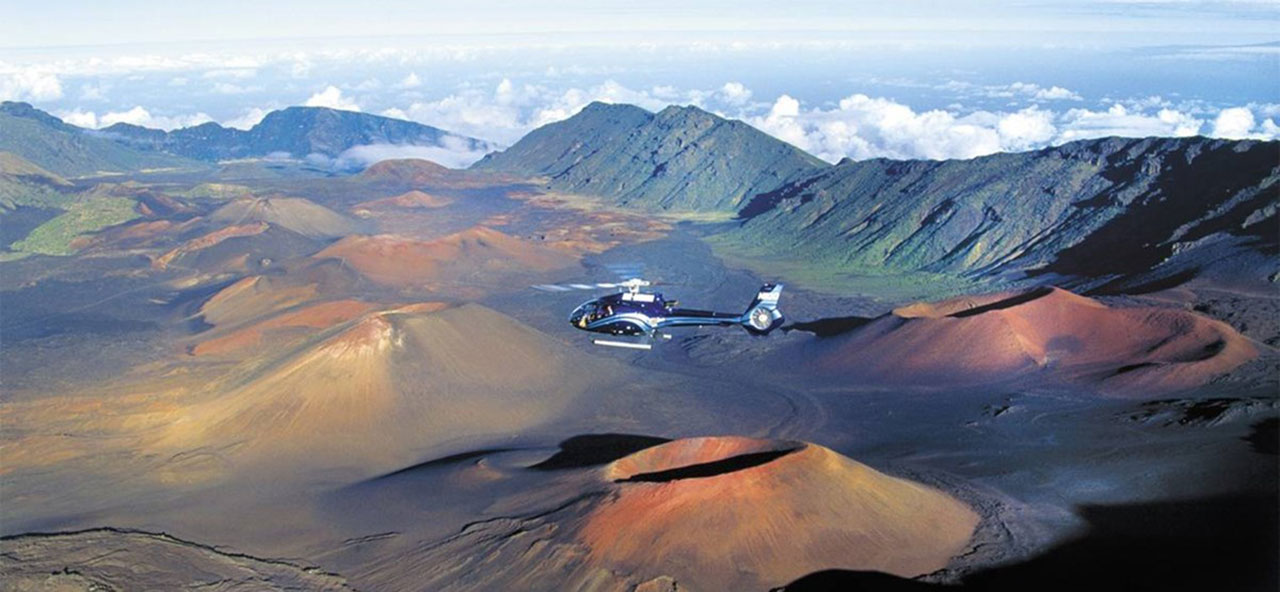Pollution
Insidious Degradation: Threats to Wilderness from Pollution
Until recently, wilderness managers focused primarily on keeping wilderness from being loved to death by visitors. Today, however, we are finding more and more that what people do outside wilderness directly affects what happens inside wilderness. While wilderness areas in general tend to harbor fewer sources of air, water, light, and noise pollution than non-wildernesses, all of those factors still impact them.
Air Pollution

Pollution affecting wilderness can be airborne. The Forest Service Air Resource Management Program estimates that air pollution impairs visibility to some degree on all federal lands, with visibility in the east estimated at one-third of what it would be without human-caused air pollution, and visibility in the west estimated at about one-half of the visual range under natural conditions. Sources of air pollution include both primary and secondary pollutants. Primary pollutants come directly from sources such as industrial facilities, automobiles and forest fires and include: sulfur and nitrogen compounds; particulate matter; and volatile organic compounds, such as paints, and toxic metals, such as mercury. Secondary pollutants, such as ozone, are formed when primary pollutants undergo chemical reactions in the atmosphere.
Water Pollution
When pollution is precipitated out of the atmosphere as rain or snow, it may fall in wilderness resulting in lake- and stream-water chemistry changes and nutrient leaching in soils. Mercury deposition, mainly due to coal combustion, has resulted in fish consumption advisories in 46 states, affecting 31 National Forests, Grasslands, and Recreation Areas. According to a study of 52 sites in the west, the Mount Zirkel Wilderness was the most acidic western wilderness due to acid rain from upwind pollution sites. In parts of the central and southern Appalachian Mountains, forest streams have become so acidic they no longer support aquatic life. In some cases, management actions to reduce acidity have been implemented, such as in 1999 when helicopters delivered 140 tons of limestone sand to six locations along rivers in the St. Mary's Wilderness. Controversial solutions like these are at the heart of the wilderness restoration dilemma because they preserve naturalness at the expense of wildness.
Wildernesses near urban areas, like the Great Swamp National Wildlife Refuge Wilderness in New Jersey, are also threatened with non-point source pollution from storm water runoff, soil erosion and septic systems. Research shows that this wilderness is a sink for various pollutants that flow into the swamp from tributaries and that the swamp's natural water purifying effects have decreased, making water quality leaving the swamp poorer than that entering the swamp.
Light Pollution
Although Congress has mandated that "sights and sounds" may not be used as a criterion when lands are designated as wilderness, light and sound pollution are negatively affecting wilderness. Today, even remote areas are being exposed to increased illumination from light pollution or "sky glow," the combined lights of cities and towns, sometimes hundreds of miles away that produce a dull glow in the night sky. The propagation of this light pollution from sources to outlying areas can negatively affect wilderness character.
It's difficult to imagine camping "underneath the stars" without the view of the cosmos above. Increasingly, however, one must often travel to the most remote places to experience truly dark skies. A world-wide study using night-time satellite imagery found, for example, that for about 80% of the United States population the night sky brightness is even greater than that measured on nights with full moons, meaning that most Americans effectively live in perennial moonlight.
A “world atlas of artificial night sky brightness” mapped in 2016 found that more than 99% of the U.S. population lives under light-polluted skies, which affect nearly half the country’s land area.
Night skies can be rated by their limiting magnitude—a term astronomers use to describe the faintest star visible to the naked eye. A total of 15,000 stars are visible under a magnitude 7 sky, characteristic of one without light pollution. Heavily lighted urban areas typically have a limiting magnitude of 3 or 4, where only a couple hundred stars are visible. Not surprisingly, then, more than two-thirds of the United States population has already lost naked eye visibility of the Milky Way.
Researchers warn that without serious control of light pollution, places with truly dark nights, such as wilderness areas, will see degraded night sky quality in less than 20 years. Already, data collected by the National Park Service's Night Sky Program show that almost every national park measured exhibits some degree of light pollution. There is, however, reason to be optimistic. "Unlike losing a species to extinction, topsoil to erosion, or yet-to-be explored virgin lands to development, the night sky is 100% recoverable."

Not only is darkness a key component of wilderness visitor experiences, ecologists are realizing that artificial night light alters natural light regimes in terrestrial and aquatic ecosystems. There are a variety of orientation/disorientation and attraction/repulsion impacts that affect navigation, competition, predation, reproduction, and communication. Sea turtle hatchlings, for example, are disoriented by lights on their natal beaches. Certain frog species stop foraging at specific light levels. Moths and other insects are at greater risk of being preyed upon because they are attracted to artificial light. Birds may move their nests in response to artificial light. Coyote communication patterns may be altered by sky glow since packs howl more during the new moon to communicate territorial claims or assemble to hunt larger prey during dark conditions.
Ecologically, light pollution can change the normal behaviors of both diurnal and nocturnal species, especially those that require certain degrees of darkness and are far more sensitive to light levels than humans are. These organisms are correspondingly more affected by light level changes and increasing light pollution.
Sound Pollution
Similar to light pollution, sound pollution (noise pollution) affects both the ecological and social aspects of wilderness. Visitors to wilderness have an expectation of seeing, hearing, and experiencing phenomena associated with a specific natural environment including sounds made by wind, birds, geysers, elk, wolves, and waterfalls, for example—not vehicles, cell phones, or aircraft. Research suggests that many human-caused noises—including airplanes, tourism helicopters, digital cameras, vehicles, and even loud groups of other people—annoy visitors seeking natural soundscapes.

Indeed, sound pollution in wilderness can be attributed to a variety of things including overflights by low-altitude military aircraft, fixed-wing aircraft, or tourism helicopters; motorboat, vehicle, or snowmobile noise from nearby roads and waterways or from illegal intrusions; or nearby commercial activities, such as mining or energy developments. Paul Matzner, chair of the Nature Sounds Society and curator of the California Library of Natural Sounds of the Oakland Museum, calls the situation a "quiet crisis" because sound pollution is not just socially undesirable, it can induce a variety of direct and indirect responses in wildlife. Physiological responses in animals range from mild annoyance to panic and escape. Factors that can influence animal responses include whether an animal is feeding, resting, caring for young, etc.; distance to the sound pollution source; source type; and suddenness and frequency of the source. Closer sound pollution sources generally are more likely to produce a response. Some indirect effects have also been documented, such as eggs kicked from nests when birds flush in response to overflights, trampling or separation from young, increased predation, loss of feeding, and avoidance or abandonment of habitat.
A 2017 study of noise pollution in U.S. protected areas found that wilderness areas in general experienced the least amount of noise exceedance—basically “the amount that anthropogenic noise raises sound above natural levels.” Yet, 12.1% of wildernesses still “experienced anthropogenic sound levels 3dB above predicted natural levels.” The authors noted, “Wilderness areas are often remote sites with low background sound levels that enhance the audibility of distant sound sources; thus, minimizing the intrusion of anthropogenic noise in wilderness will require noise management at larger scales.”
Severe sound pollution has, in some cases, demanded action. In Zion National Park, most of which was designated as wilderness in 2009, visitation doubled between 1982 and 1997 to more than 2.6 million visitors per year, most of whom lined up to drive through the park's famous canyon. In 2000, however, the park banned vehicles during its busiest times and created a mandatory shuttle system. Although extremely controversial at the time, subsequent monitoring through the National Park Service Natural Sounds and Night Skies Division has revealed that the ban has improved the area's sound quality for visitors and wildlife in the wilderness and non-wilderness portions of the park. Before the ban, several wildlife species had moved further and further from the main roads to avoid the sound of vehicles. Today, visitors have reported seeing mountain lions from the shuttle buses.